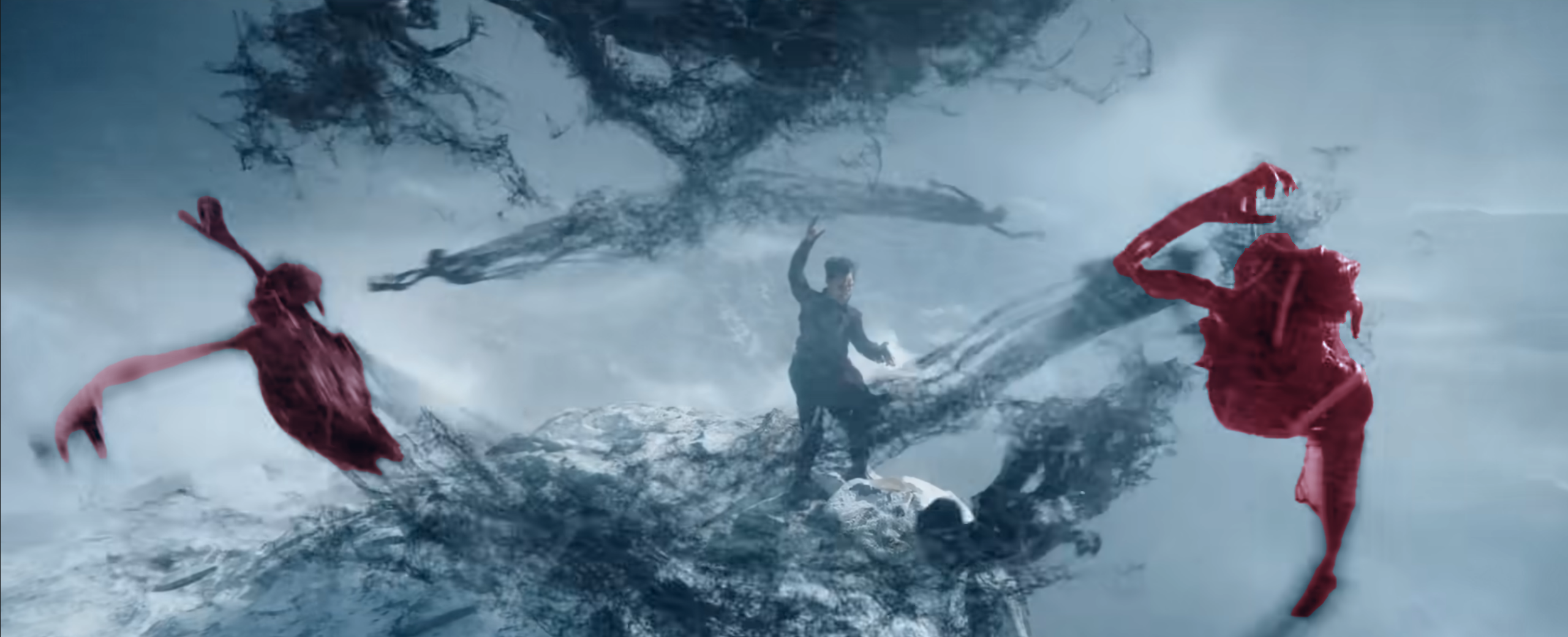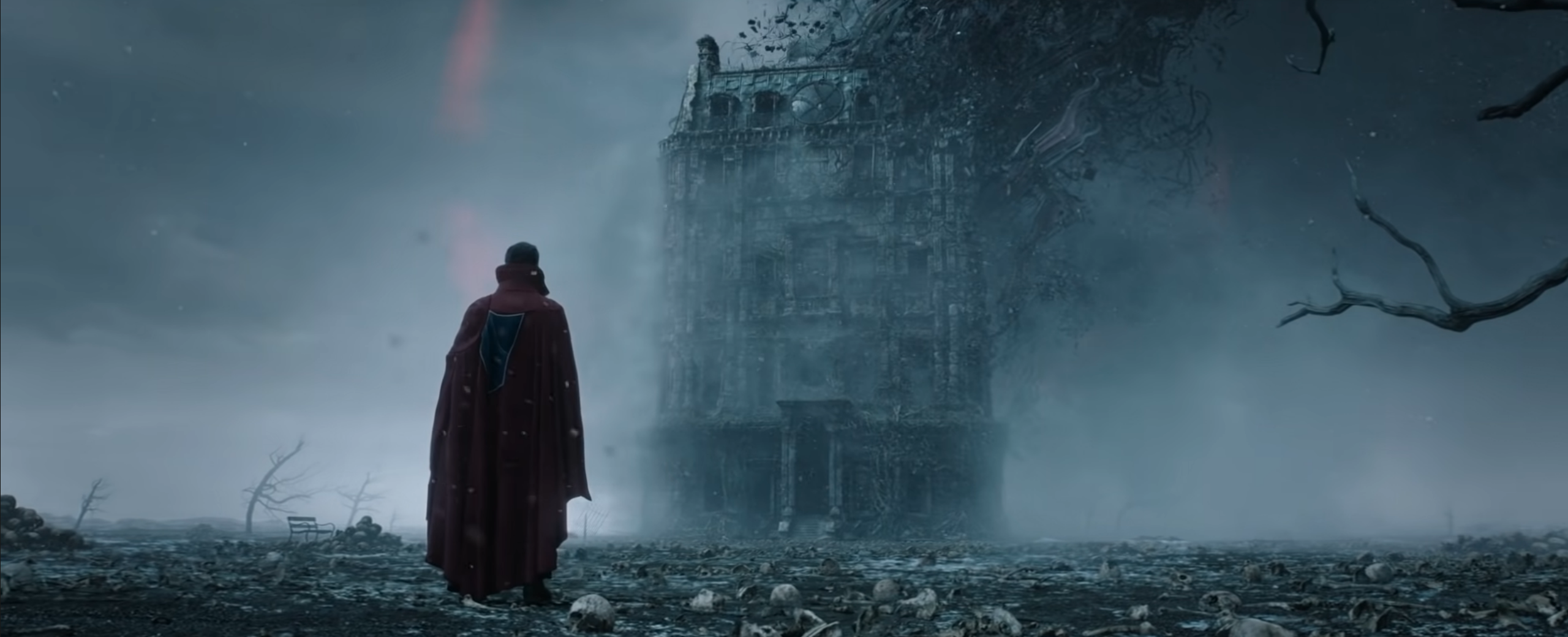With any prediction or forecast, a lot of focus usually goes to the most likely outcome without appropriate consideration given to nearly-as-likely outcomes.
Hence, in the second of our running series (and a third not too far in the future with the federal election!), we’ve taken outcomes from both ends of our model’s margin of error (95% CI) for the major parties and Independents, to show the range of possible outcomes within the margin of error. Our intrepid reporter, Rebekah, has snagged a Time Stone off a caped medical professional and traveled to each of these alternate realities to steal the scoop off their journalists.
The Multiverse (two months before Madness) Catalogue – SA 2022
Beware the Ides of March!
(Upside: Labor, Downside: Liberal)

Labor catapults to triumphal victory in South Australia with a confirmed 30 seats of 47, and a chance at three more still in the count. A year and six days after Labor’s bloodbath of a win in Western Australia, their Southern Australian brethren have done that legacy proud and beat the polls to what looks like a 58-42 win on the popular vote. Possibly better yet, they soared to these heights after just one term in opposition, and even took out the Liberal Premier’s seat of Dunstan from under him.
The Liberals have eleven confirmed seats across the state, and independents three. Heysen, Unley and Gibson are still being counted, and we expect that to take some more time. The recent increase in declaration votes, which can only be counted when all normal votes have been processed, also makes it difficult to tell which way the remaining votes will skew. Traditionally they lean Liberal and to a lesser extent Green, but that was pre-pandemic: the incentives and rationale for postal and pre-poll voting have changed significantly since then.
The Liberals are currently holding on in Gibson by a margin of 0.4%, while Unley is on an even thinner margin, with the Liberals currently at 50.1%, having traded the lead with Labor back and forth all night. Unley is usually a Liberal stronghold, and a Labor swing in line with the rest of the state average would have still seen its Liberal MP ahead with 51.6%. But uniform swing is the agglomeration of all the electorates’ particular turns, and the unusual surge of Labor sentiment appears to have struck with particular viciousness in this Liberal heartland.
Frances Bedham, unfortunately, is one of the independent casualties of Labor’s climb to victory. Her effort to retake a new seat in Newland following the hanging-and-quartering of her old loyal electorate has failed; while she made it into the final two, Labor still beat her on first preferences.
Heysen has turned into a three-way quagmire between both major parties and the Greens. The Greens have traditionally done very well here, making it to the final two in 2014. In 2018, Nick Xenephon’s SA Best took their place. Both years, the minors lost to the Libs. Now with SA Best out of the way the Greens have recovered their lost votes, but are also up against a resurgent Labor, duking it out to be in the final two. The preference flows of the eliminated party will be the deciding factor. The current count stands at LIB 42%, ALP 26%, Green 23%, and Others 10%. The Greens are still in the running here, but if it ends up as a Labor-vs-Liberal contest then the number of Green-to-Labor preferences – usually lower in SA than in the rest of the nation – might end up deciding the contest.
The Real Loser Here Isn’t Labor, but South Australian Democracy
(Upside: LIB, Downside: ALP)

In 2002, 2010, 2014 and now presumably 2022, the winner of the South Australian popular vote has not been the party to form government. Despite endless redistricting and recombining of electorates that has thrown independents like Frances Bedford and Geoff Brock out of their now-abolished seats and back to the mercies of a new base, the EBDC (the Electoral Boundaries Drawing Commission, as dry an alphabet-soup name as you could imagine) once again appears to have been foiled – or failed – by their maps.
Failing us as well have been the polls, which predicted a strong Labor victory, to no avail. As John Howard warned us in the come-up to the election: “Steven Marshall has turned around South Australia’s economy” and as a man frequently embattled by opinion polling, we should have heard him clearly when he said they were a poor guide. Of course, former politicians don’t have any more insight into whether the polls are going to be wrong than the rest of us do.
But, let’s be honest, fronting a former politician to talk about an election result is exactly the sort of thing you’d expect from a journalist, no? (Even an alternate-timeline one.) “Tune in Saturday”, was his verdict: he was correct. The South Australian people may not have whole-heartedly returned Marshall to power, but the vagaries of the electorate map did, and to grizzled old veterans like Howard, those are the results that count.
The Liberals look to be continuing into their second term in government with 22 seats and a deficient 49% of the vote. Labor, with the majority 51% of the vote, can be confident of just 20 seats. Their MPs’ personal votes have helped the Liberals over the line, with incumbents holding onto Elder, and currently leading in King, Adelaide and Newland. Labor’s hope/wish is for both seats to fall to the ALP and Newland to go to the independent, Frances Bedford, but that doesn’t look likely at this point. King by all reasonable estimations should have fallen to the ALP already, but the Liberal incumbent has proved surprisingly scrappy and is currently holding out. Bedford is currently ahead on the 2 candidate preferred in Newland, but I have limited faith that that will continue after the postal and pre-poll votes, which normally skew Liberal, are counted. Adelaide may yet fall to Labor – but one of three will be a small consolation to Labor, which, despite having won the state, will likely be losing the House.
Independents Steal the March on Losing Liberals
(Upside: IND)
March is turning out to be a bad month for the Liberal party across the country, as Labor follows up their victory in WA with a resounding win in South Australia. The polls, right on point for once, called the ALP 54.5% margin of victory, for a total of 27 seats to the Libs’ all-time low of 15, but we can rest satisfied knowing that they still underestimated the perennial appeal of an independent in SA. That’s right, ladies and gentleman, in an repeat of 2018, we have an all-new, rambunctious crossbench in the offing.
Mount Gambier, Stuart, Kavel, Narungga, and Newland, have offered us a quintet of brave enterprising individuals ready to go it alone and campaign on the plain strength of their charisma. Mount Gambier’s independent incumbent retained their seat. Stuart and Newland have seen Geoff Brock and Frances Bedford triumph against the odds and the Electoral Boundaries Drawing Commission, proving that even with their loyal base of supporters divided up in a dog’s breakfast of new electorates, they’ve still got the appeal to get them through; surprisingly, both Liberal defectors – Dan Kregan and Fraser Ellis, the latter booted for an expenses scandal that apparently the general public couldn’t understand less about nor care less about – have succeeded in re-election, being directly responsible for taking two seats straight out from under their old party.
Labor may have won, but as always, South Australia’s charming penchant for their underdogs has carried the day.
And the last, with the exception of Frances Bedford (vale, comrade!) was spot-on.
My view is that our South Australian forecast still under-estimated some independents (in particular the Liberal defectors, and Lou Nicholson in Finniss), even if it got others right (particularly Geoff Brock’s return in Stuart).
Digging into the model (full details to come when I have the time to write a forecast scoring piece – which may not be for a while, due to the federal election + other things), I think the major issue here was an under-estimate of the Labor/Greens preference flow to the independents (against the Liberals), which I estimated at about 74% based on historical data..
Turns out the preference flow is well in excess of 80%, which makes a big difference because the Labor/Green combined primary tends to hover around 20% – 30% of the vote. When this is fixed, the 2cp estimate for the Independent in e.g. Finniss (conditional on it being a Liberal vs Independent count) is 50.1% vs LIB instead of being 46% vs LIB (actual result 49.3).
I have accounted for this in my federal model by doing a proper distribution of preferences simulation (instead of randomly picking two candidates and simulating a preference flow between them), using trends in the preference flows in addition to historical data (which bumps up ALP/GRN > OTH preference flows in OTH vs LIB contests) and using trends in the analysis of candidate effects (which increases OTH primary vote to begin with, for prominent OTH candidates).